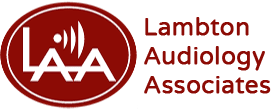
Once you’ve adjusted to life with your hearing aid, it becomes an important part of your daily regimen. The likelihood of a malfunction can be distressing, as it poses not just a disturbance to daily life, but also a significant financial burden in the form of repair or replacement costs.
Tips for maintaining and maximizing your hearing aid performance
Comprehending what can damage your hearing aid and knowing how to maintain it properly will help you maintain its functionality and ensure it continues to enrich your quality of life.
Effective care of batteries
Your hearing aid’s functionality is heavily dependent on its battery. Hence, it is important to select the correct batteries for your device. Consult with your audiologist to find out which battery type is most suitable for your specific hearing aid model.
Handling the batteries with care is equally important. The natural oils, dirt, and moisture on your skin can pass on to the batteries and result in contamination, jeopardizing their performance and potentially leading to damage.
Before replacing the battery, make sure your hands are clean and completely dry to prevent any moisture from entering the device.
Stick directly to the manufacturer’s instructions, especially pertaining to battery upkeep. To prolong the battery life of your hearing aid, make sure to power it down when not wearing it and keep it stored in a secure, dry location. Knowing the average lifespan of a battery can also be really helpful.
Make a note on your calendar each time you change the battery, so you can estimate when it will require changing again. To avoid being stuck without power, always bring a spare battery with you, particularly when you’re away from home.
Prevent moisture damage
Hearing aids, being technological devices, are vulnerable to moisture. Even brief contact can cause harm or complete failure of the device. Safeguard your hearing aid’s performance by acquiring a specialized drying device to maintain its functionality by getting rid of moisture. This device supplies a safe and dry environment for your hearing aid when not in use, protecting it from damage related to unwanted moisture.
To safeguard your hearing aid from moisture damage, it’s a smart plan to take it out before participating in activities that make you perspire heavily. Having said that, consult your hearing specialist first, as taking out your hearing aid during exercise, particularly outdoors, might pose safety risks by reducing your ability to hear environmental sounds like traffic or alarms. If possible, choose to exercise inside where it is safer to take out your hearing aid, and make sure to remove your device before bathing or swimming.
Also, avoid using hairspray, spray deodorants, and other aerosol items while using your hearing aid. These products contain moisture and chemicals that can accumulate on the device, causing long-term damage. Apply these products before putting on your hearing aid to reduce exposure.
Control earwax buildup
Though earwax plays a protective role by keeping dust, insects, and other foreign debris out of your ears, it can present a challenge for your hearing aid. The accumulation of earwax in the device can result in it not functioning correctly. To manage this, have your ears examined by your hearing specialist or physician to evaluate the level of earwax buildup and create an appropriate cleaning routine for both your ears and your hearing aid.
Cleaning your ears safely is essential– never insert any objects into your ear canal. Instead, allow warm water to flow into your ears during showers, which can help disperse and wash away some of the wax. It is also recommended to have your ears cleaned routinely by a professional. While this might seem inconvenient, it’s significantly less problematic than managing a malfunctioning hearing aid caused by excessive earwax.
To properly clean your hearing aid, carefully adhere to the guidelines provided by the manufacturer.
Various kinds of hearing aids may need specific cleaning methods, and using an incorrect technique might damage your device. If you’re unsure about the proper cleaning method, consult your hearing specialist or hearing aid provider to ensure you’re taking the correct steps to protect your device from earwax damage.
Basic steps for long-term dependability
Once you get used to using your hearing aids, they become a critical facet of your daily routine, making it hard to envision life without them. By taking a few simple safety measures, you can avoid damage and ensure your hearing aids continue to be dependable for years to come. Routine maintenance, proper storage, and careful handling are essential to keeping your hearing aids in optimum condition, allowing you to keep enjoying the enhanced quality of life they supply.
If you are having troubles with your hearing aid or need to schedule a routine maintenance appointment, please arrange for a visit.
